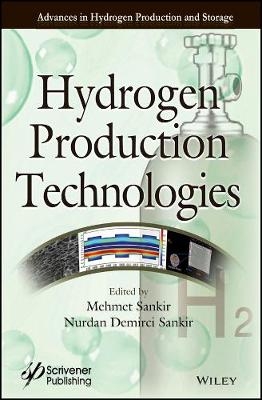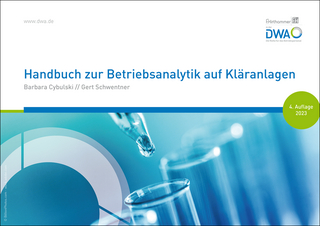
Hydrogen Production Technologies
Wiley-Scrivener (Verlag)
978-1-119-28364-5 (ISBN)
- Titel z.Zt. nicht lieferbar
- Versandkostenfrei innerhalb Deutschlands
- Auch auf Rechnung
- Verfügbarkeit in der Filiale vor Ort prüfen
- Artikel merken
Hydrogen has been gaining more attention in both transportation and stationary power applications. Fuel cell-powered cars are on the roads and the automotive industry is demanding feasible and efficient technologies to produce hydrogen.
The principles and methods described herein lead to reasonable mitigation of the great majority of problems associated with hydrogen production technologies. The chapters in this book are written by distinguished authors who have extensive experience in their fields, and readers will have a chance to compare the fundamental production techniques and learn about the pros and cons of these technologies.
The book is organized into three parts. Part I shows the catalytic and electrochemical principles involved in hydrogen production technologies. Part II addresses hydrogen production from electrochemically active bacteria (EAB) by decomposing organic compound into hydrogen in microbial electrolysis cells (MECs). The final part of the book is concerned with photohydrogen generation. Recent developments in the area of semiconductor-based nanomaterials, specifically semiconductor oxides, nitrides and metal free semiconductor-based nanomaterials for photocatalytic hydrogen production are extensively discussed.
Mehmet Sankir received his PhD in Macromolecular Science and Engineering from the Virginia Polytechnic and State University, USA in 2005. He is currently an Associate Professor in the Department of Materials Science and Nanotechnology Engineering, TOBB University of Economics and Technology, Ankara, Turkey and group leader of Advanced Membrane Technologies Laboratory. Mehmet has actively carried out research and consulting activities in the areas of membranes for fuel cells, flow batteries, hydrogen generation and desalination. Nurdan Demirci Sankir is currently an Associate Professor in the Materials Science and Nanotechnology Engineering Department at the TOBB University of Economics and Technology, Ankara, Turkey. She received her M.Eng and PhD degrees in Materials Science and Engineering from the Virginia Polytechnic and State University, USA in 2005. She then joined NanoSonic Inc. in Virginia, USA as R&D engineer and program manager, and in 2007 she enrolled at TOBB ETU where she established the Energy Research and Solar Cell Laboratories. Nurdan has actively carried out research activities in many areas including solar driven water splitting, photocatalytic degradation and nanostructured semiconductors.
Preface xvii
Part I Catalytic and Electrochemical Hydrogen Production
1 Hydrogen Production from Oxygenated Hydrocarbons: Review of Catalyst Development, Reaction Mechanism and Reactor Modeling 3
Mohanned Mohamedali, Amr Henni and Hussameldin Ibrahim
1.1 Introduction 4
1.2 Catalyst Development for the Steam Reforming Process 6
1.3 Kinetics and Reaction Mechanism for Steam Reforming of Oxygenated Hydrocarbons 37
1.4 Reactor Modeling and Simulation in Steam Reforming of Oxygenated Hydrocarbons 48
References 50
2 Ammonia Decomposition for Decentralized Hydrogen Production in Microchannel Reactors: Experiments and CFD Simulations 77
Steven Chiuta, Raymond C. Everson, Hein W.J.P. Neomagus and Dmitri G. Bessarabov
2.1 Introduction 78
2.2 Ammonia Decomposition for Hydrogen Production 80
2.3 Ammonia-Fueled Microchannel Reactors for Hydrogen Production: Experiments 89
2.4 CFD Simulation of Hydrogen Production in Ammonia-Fueled Microchannel Reactors 96
2.5 Summary 104
Acknowledgments 104
References 104
3 Hydrogen Production with Membrane Systems 113
F. Gallucci, A. Arratibel, J.A. Medrano, E. Fernandez, M.v. Sint Annaland and D.A. Pacheco Tanaka
3.1 Introduction 114
3.2 Pd-Based Membranes 115
3.3 Fuel Reforming in Membrane Reactors for Hydrogen Production 125
3.4 Thermodynamic and Economic Analysis of Fluidized Bed Membrane Reactors for Methane Reforming 129
3.5 Conclusions 143
Acknowledgments 144
References 144
4 Catalytic Hydrogen Production from Bioethanol 153
Peng He and Hua Song
4.1 Introduction 154
4.2 Production Technology Overview 155
4.3 Catalyst Overview 166
4.4 Catalyst Optimization Strategies 168
4.5 Reaction Mechanism and Kinetic Studies 174
4.6 Computational Approaches 179
4.7 Economic Considerations 182
4.8 Future Development Directions 185
Acknowledgment 189
References 189
5 Hydrogen Generation from the Hydrolysis of Ammonia Borane Using Transition Metal Nanoparticles as Catalyst 207
Serdar Akbayrak and Saim Özkar
5.1 Introduction 207
5.2 Transition Metal Nanoparticles in Catalysis 209
5.3 Preparation, Stabilization and Characterization of Metal Nanoparticles 209
5.4 Transition Metal Nanoparticles in Hydrogen Generation from the Hydrolysis of Ammonia Borane 212
5.5 Durability of Catalysts in Hydrolysis of Ammonia Borane 218
5.6 Conclusion 221
References 222
6 Hydrogen Production by Water Electrolysis 231
Sergey A. Grigoriev and Vladimir N. Fateev
6.1 Historical Aspects of Water Electrolysis 231
6.2 Fundamentals of Electrolysis 232
6.3 Modern Status of Electrolysis 238
6.4 Perspectives of Hydrogen Production by Electrolysis 266
Acknowledgment 268
References 269
7 Electrochemical Hydrogen Production from SO2 and Water in a SDE Electrolyzer 277
A.J. Krüger, J. Kerres, H.M. Krieg and D. Bessarabov
7.1 Introduction 278
7.2 Membrane Characterization 280
7.3 MEA Characterization 286
7.4 Effect of Anode Impurities 293
7.5 High Temperature SO2 Electrolysis 295
7.6 Conclusion 297
References 298
Part II Bio Hydrogen Production
8 Biomass Fast Pyrolysis for Hydrogen Production from Bio-Oil 307
K. Bizkarra, V.L. Barrio, P.L. Arias and J.F. Cambra
8.1 Introduction 308
8.2 Biomass Pyrolysis to Produce Bio-Oils 310
8.3 Bio–oil Reforming Processes 331
8.4 Future Prospects 346
References 348
9 Production of a Clean Hydrogen-Rich Gas by the Staged Gasification of Biomass and Plastic Waste 363
Joo-Sik Kim and Young-Kon Choi
9.1 Introduction 364
9.2 Chemistry of Gasification 365
9.3 Tar Cracking and H2 Production 367
9.4 Staged Gasification 368
9.5 Experimental Results and Discussion 370
9.6 Conclusions 383
References 383
10 Enhancement of Bio-hydrogen Production Technologies by Sulphate-Reducing Bacteria 385
Hugo Iván Velázquez-Sánchez, Pablo Antonio López-Pérez, María Isabel Neria-González and Ricardo Aguilar-López
10.1 Introduction 386
10.2 Sulphate-Reducing Bacteria for H2 Production 387
10.3 Kinetic Modeling of the SR Fermentation 388
10.4 Bifurcation Analysis 394
10.5 Process Control Strategies 398
10.6 Conclusions 403
Acknowledgment 403
Nomenclature 403
References 404
11 Microbial Electrolysis Cells (MECs) as Innovative Technology for Sustainable Hydrogen Production: Fundamentals and Perspective Applications 407
Abudukeremu Kadier, Mohd Sahaid Kalil, Azah Mohamed, Hassimi Abu Hasan, Peyman Abdeshahian, Tayebeh Fooladi and Aidil Abdul Hamid
11.1 Introduction 408
11.2 Principles of MEC for Hydrogen Production 409
11.3 Thermodynamics of MEC 410
11.4 Factors Influencing the Performance of MECs 412
11.5 Current Application of MECs 432
11.6 Conclusions and Prospective Application of MECs 440
Acknowledgments 441
References 441
12 Algae to Hydrogen: Novel Energy-Efficient Co-Production of Hydrogen and Power 459
Muhammad Aziz and Ilman Nuran Zaini
12.1 Introduction 459
12.2 Algae Potential and Characteristics 461
12.3 Energy-Efficient Energy Harvesting Technologies 464
12.4 Pretreatment (Drying) 467
12.5 Conversion of Algae to Hydrogen-Rich Gases 470
12.6 Conclusions 482
References 483
Part III Photo Hydrogen Production
13 Semiconductor-Based Nanomaterials for Photocatalytic Hydrogen Generation 489
Zipeng Xing, Zhenzi Li and Wei Zhou
13.1 Introduction 490
13.2 Semiconductor Oxide-Based Nanomaterials for Photocatalytic Hydrogen Generation 491
13.3 Semiconductor Sulfide-Based Nanomaterials for Photocatalytic Hydrogen Generation 506
13.4 Metal-Free Semiconductor Nanomaterials for Photocatalytic Hydrogen Generation 517
13.5 Summary and Prospects 527
Acknowledgments 528
References 528
14 Photocatalytic Hydrogen Generation Enabled by Nanostructured TiO2 Materials 545
Mengye Wang, Meidan Ye, James Iocozziaand Zhiqun Lin
14.1 Introduction 546
14.2 Photocatalytic H2 Generation 547
14.3 Main Experimental Parameters in Photocatalytic H2 Generation Reaction 549
14.4 Types of TiO2 Nanostructures 551
14.5 Conclusions and Outlook 568
Acknowledgments 569
References 569
15 Polymeric Carbon Nitride-Based Composites for Visible-Light-Driven Photocatalytic Hydrogen Generation 579
Pablo Martín-Ramos, Jesús Martín-Gil and Manuela Ramos Silva
15.1 Introduction 580
15.2 General Comments on g-C3N4 and its Basic Properties 581
15.3 Synthesis of Bulk g-C3N4 586
15.4 Functionalization of g-C3N4 588
15.5 Photocatalytic Hydrogen Production Using g-C3N4 598
15.6 Conclusions 614
References 615
| Erscheinungsdatum | 05.05.2017 |
|---|---|
| Reihe/Serie | Advances in Hydrogen Production and Storage (AHPS) |
| Sprache | englisch |
| Maße | 158 x 231 mm |
| Gewicht | 998 g |
| Themenwelt | Naturwissenschaften ► Chemie |
| Technik ► Elektrotechnik / Energietechnik | |
| Technik ► Maschinenbau | |
| ISBN-10 | 1-119-28364-7 / 1119283647 |
| ISBN-13 | 978-1-119-28364-5 / 9781119283645 |
| Zustand | Neuware |
| Haben Sie eine Frage zum Produkt? |
aus dem Bereich


